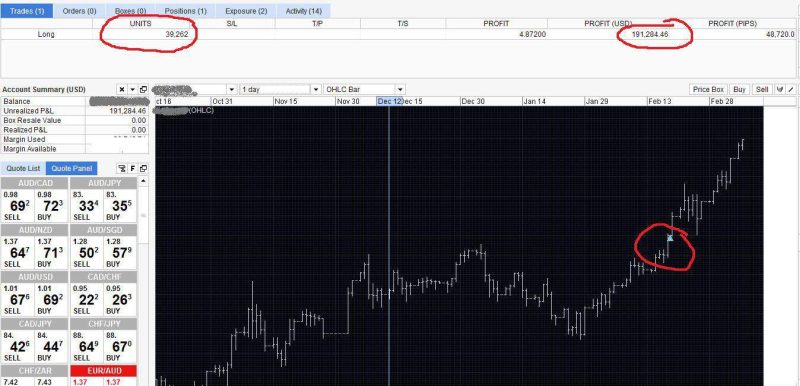In the dynamic world of cryptocurrency trading, the stakes are high and the terrain is ever-changing. Given the volatile nature of this asset class, making informed decisions isn't merely a best practice; it's an imperative for risk management and potential profitability. This underscores the need for sophisticated tools capable of guiding traders through the labyrinthine market conditions.
One such instrumental resource is trading signals, a time-tested mechanism for decision-making, tailored to the unique attributes of the cryptocurrency market.
Utilizing trading signals can serve as a compass, providing actionable insights based on a myriad of factors including market trends, price movement, and statistical analysis. Whether you're a novice trader or a seasoned investor, understanding the utility and application of trading signals is essential for optimizing your trading strategy.
What Are Trading Signals?

In the realm of trading, especially within the volatile cryptocurrency market, trading signals are invaluable assets. Simply put, a trading signal is a trigger for action, either to buy, sell, or hold a specific asset, based on a series of predefined criteria. These signals aim to provide traders with the ammunition needed to make informed decisions in real-time.
The generation of these signals is rooted in a blend of technical analysis, fundamental analysis, and sometimes, quantitative methods. Technical analysis involves studying historical price charts and various indicators like moving averages and RSI. Fundamental analysis, on the other hand, focuses on intrinsic factors like the overall state of the economy, industry conditions, and the performance of the underlying company.
In the realm of cryptocurrencies, this could also involve sentiment analysis from social media and news trends. Quantitative methods incorporate complex algorithms and mathematical models, often tapping into machine learning algorithms to predict future price movements.
Regarding types, trading signals are predominantly categorized into three: Buy signals, Sell signals, and Hold signals. A ‘Buy' signal suggests an opportunity to purchase an asset with the expectation that its value will rise. A ‘Sell' signal indicates the opposite: a prompt to liquidate a position in anticipation of a decline in the asset's value. Lastly, a ‘Hold' signal advises maintaining your current positions, signifying that no advantageous trades appear to be available.
Also Read: Understanding Forex Trading Signals
The Role of Trading Signals in Traditional Markets
As we navigate the landscape of cryptocurrency trading, it's worth pausing to examine the roots of trading signals in traditional financial markets like stocks and forex. The practice is far from new; it has long been a cornerstone for traders and investors seeking an edge in these markets.
In both the stock and forex markets, trading signals serve as reliable indicators for entry and exit points, based on a plethora of technical and fundamental variables. While the metrics used may differ, the fundamental purpose remains the same: to aid traders in making informed decisions. The reliability of these signals largely depends on the quality of the analysis and the expertise of the provider. In mature markets, reputable signal providers often have a track record of accuracy and a loyal following of traders.
When it comes to their utility, trading signals offer invaluable benefits, such as time-efficiency and a structured approach to trading. They can serve as a guiding light, especially for traders who may not have the time or skill to analyze markets deeply. However, it's important to note that no signal can guarantee success; they are tools, not foolproof strategies.
As we transition this understanding into the realm of cryptocurrency, the role of trading signals remains largely analogous, albeit with some tailoring to account for the market's distinct volatility and behavioral patterns. In summary, trading signals have demonstrated their utility and reliability in traditional markets, making them a resource that cryptocurrency traders can ill afford to ignore.
Adaptation to Cryptocurrency Markets

Navigating the tempestuous seas of cryptocurrency requires a different set of navigational tools, given its inherent volatility. Unlike traditional markets, the crypto market is marked by rapid price swings, sometimes occurring within minutes. This adds both opportunities for high returns and risks of significant losses, making it imperative to utilize specialized tools adapted for this market's unique conditions.
Trading signals have been adapted to suit the nuances of cryptocurrency trading. Unlike their traditional counterparts, cryptocurrency signals often rely more heavily on technical and sentiment analysis due to the lack of established fundamentals. Additionally, they're configured to react to market-moving events at a much faster pace. This real-time, actionable data can be a lifeline for traders in a market that operates 24/7.
Popular platforms offering cryptocurrency trading signals include CryptoHopper, Signal Profits, and TradingView. These platforms cater to a range of traders, from novices to experts, and offer varying degrees of complexity in their signal algorithms. It's important to conduct your own due diligence when choosing a platform, considering factors like credibility, user reviews, and the underlying methodology for signal generation.
Benefits of Using Trading Signals in Cryptocurrency
In the fast-paced arena of cryptocurrency trading, every second counts. One of the foremost benefits of using trading signals is the time-saving aspect they offer. By providing real-time, actionable insights, these signals eliminate the need for you to constantly monitor price charts and news feeds. Instead, you receive timely alerts that guide your trading decisions, enabling you to focus on strategy optimization and other activities.
Another pivotal advantage is risk mitigation. Trading signals are derived from meticulous analysis, be it technical, fundamental, or a combination of both. This analytical backing helps you to steer clear of emotional trading, a common pitfall that often leads to costly mistakes. With accurate signals, you're better equipped to set stop-loss and take-profit levels, thereby managing risk more effectively.
Lastly, trading signals can substantially enhance profitability. By providing informed recommendations on entry and exit points, they enable you to capitalize on market opportunities that you might otherwise miss. While it's crucial to remember that no trading signal can guarantee returns, using them as part of a well-rounded trading strategy can help you make more informed decisions, thereby increasing your odds of executing profitable trades.
Potential Drawbacks

While trading signals offer a host of advantages, it's crucial to be aware of their potential drawbacks. First and foremost is the issue of false signals. No trading signal is infallible; there will inevitably be instances where the recommended action doesn't result in the expected outcome. False signals can lead to unnecessary losses and may erode your trading capital if not managed carefully.
Another consideration is the cost associated with trading signal services. Many platforms offer their services at a premium, requiring monthly or annual subscriptions. These fees can add up, and if the signals are not sufficiently accurate, you could end up losing more money than you gain from following them. It's essential to perform a cost-benefit analysis to ascertain the service's value for your trading needs.
Lastly, there's the risk of over-reliance on signals. While trading signals can be incredibly useful, they should not replace fundamental trading skills and market understanding. Over-reliance can make you complacent and less vigilant about keeping up-to-date with market trends, news, and other critical factors that influence asset prices. Moreover, signals do not account for your personal risk tolerance or financial situation, factors that should always be considered in any trading decision.
Real-World Implications
When discussing the real-world implications of crypto signals, case studies can offer invaluable insights. Let's delve into a couple of scenarios that I've seen unfold among friends and students engaged in cryptocurrency trading.
First, let's talk about successful trades influenced by trading signals. One of my students relied on a combination of technical and sentiment analysis signals from a well-regarded platform. Acting on a ‘Buy' signal for Bitcoin when it was around $40,000, he was able to ride the upswing to $45,000 before a ‘Sell' signal emerged. By adhering strictly to these crypto signals, he capitalized on the opportunity to lock in a significant profit within a relatively short time frame.
However, crypto signals are not a golden ticket to guaranteed profits, as illustrated by a contrasting experience from one of my friends. He subscribed to a trading signal service with the hopes of making quick gains. Unfortunately, the ‘Buy' and ‘Sell' signals he received led to unprofitable outcomes. Despite a series of ‘Buy' signals for Ethereum, the market moved against the predictions, and he ended up selling at a loss. This example underscores the risks of false crypto signals and the importance of applying your own analysis and risk management strategies in tandem with crypto signals.
Both examples illustrate the double-edged nature of crypto signals. While they can be instrumental in identifying lucrative trading opportunities, their effectiveness ultimately hinges on their accuracy and your own trading acumen. This makes it crucial to approach crypto signals as a tool, rather than a foolproof strategy.
How to Choose a Reliable Crypto Signals Provider

Selecting the best crypto signals providers is a pivotal decision that can significantly impact your trading journey. First and foremost, consider the provider's credibility and track record. Crypto signals providers should have a history of delivering accurate signals, ideally backed by data and performance metrics. Research the team behind the service; expertise in financial markets and data analysis is a good indicator of reliability.
Next, turn your attention to customer reviews and expert opinions of the signal provider. User testimonials offer insights into the effectiveness of the trading signals, their timeliness, and the customer service quality of the provider.
Finally, conduct a cost-benefit analysis to evaluate crypto signal providers. Consider the subscription fees against the potential returns you expect to gain from the signals. Some offer free crypto signals, and some provide an expensive service that may be justifiable if it offers high accuracy and comprehensive analysis that aligns with your trading strategy. However, be cautious of services promising guaranteed returns; trading inherently involves risks, and no service can offer foolproof results.
Conclusion
In the fast-moving world of cryptocurrency trading, crypto signals can serve as invaluable tools. They offer time-efficiency, help in risk mitigation, and have the potential to boost profitability. However, these benefits come with caveats like the risk of false signals and associated costs.
As an expert trader in diverse financial markets, I can attest that trading signals should be part of a broader trading strategy, not a substitute. I strongly encourage traders to weigh the pros and cons before integrating these tools into their trading arsenal.
Also Read: 9 Best Cryptocurrency Trading Courses
FAQs
Are crypto trading signals foolproof for making profitable trades?
No, crypto trading signals are not foolproof. While they can be a valuable resource for making informed decisions, their effectiveness depends on their accuracy and how they're used within a broader trading strategy.
How do I choose the best crypto trading signals provider?
Selecting the right provider involves several factors including their credibility and track record, customer reviews, and a cost-benefit analysis. Take time to research and assess these elements to find a service that aligns with your trading goals and risk tolerance.
Do crypto trading signals apply only to certain cryptocurrencies?
Generally, crypto signals can be applied to a wide range of cryptocurrencies. However, the reliability may vary depending on the liquidity and market behavior of the specific asset. Always do your own research in addition to using trading signals for a particular cryptocurrency.

















